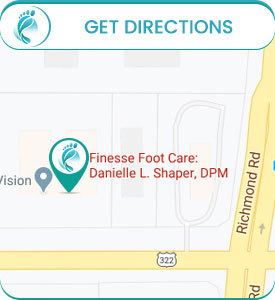Home » Lyndhurst OH Stress Fracture Treatment
You cannot copy content of this website, your IP is being recorded
Stress Fracture Treatment Specialist in Lyndhurst, OH
A stress fracture is a minor crack in a bone or severe internal bruising. Overuse and repetitive exercise are the most prominent causes of stress fractures, which are common among runners and sportsmen. The most common symptom of a stress fracture in the foot or ankle is discomfort. The pain normally begins gradually and intensifies with weight-bearing activity. At Finesse Footcare, Dr. Danielle L. Shaper, DPM, and his professional team can help you if you need stress fracture treatment. For more information, contact us or schedule an appointment online. We are conveniently located at 5035 Mayfield Rd Lyndhurst, OH 44124.
Additional Services You May Need






